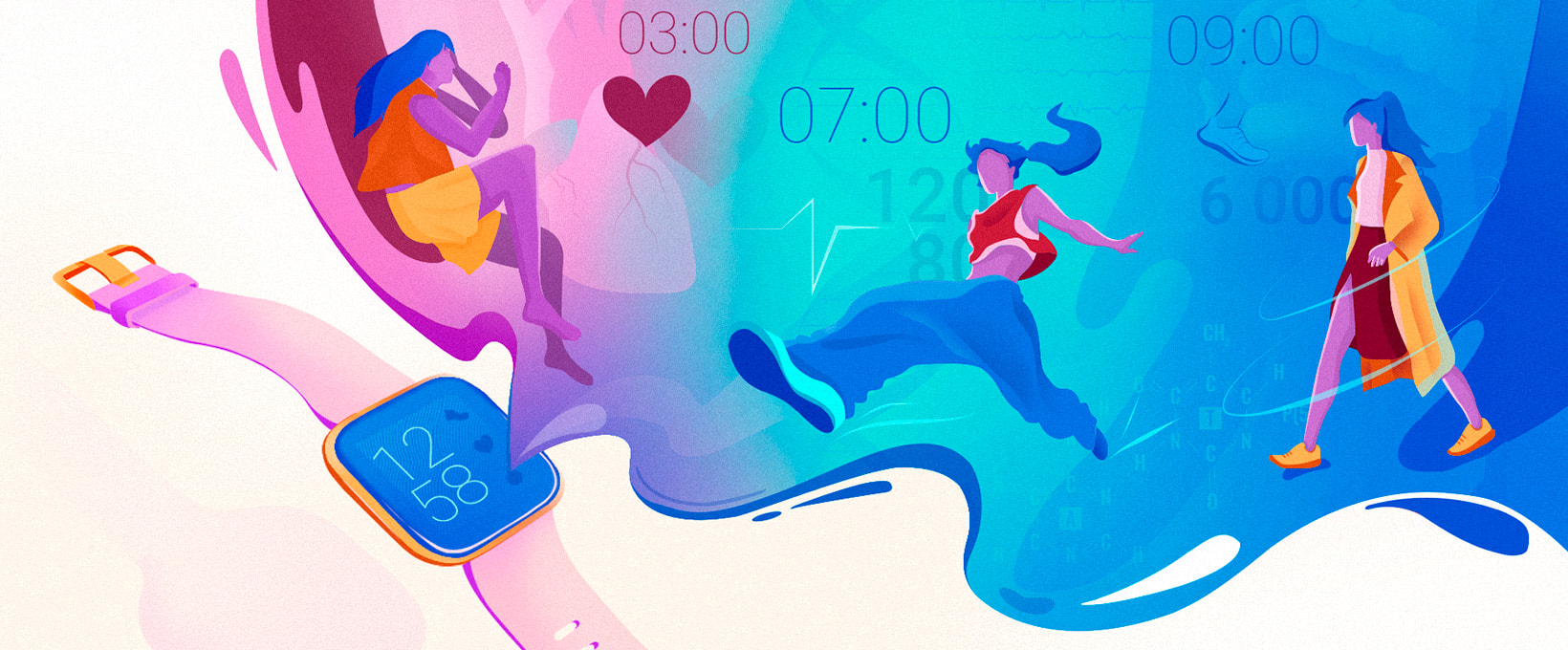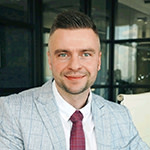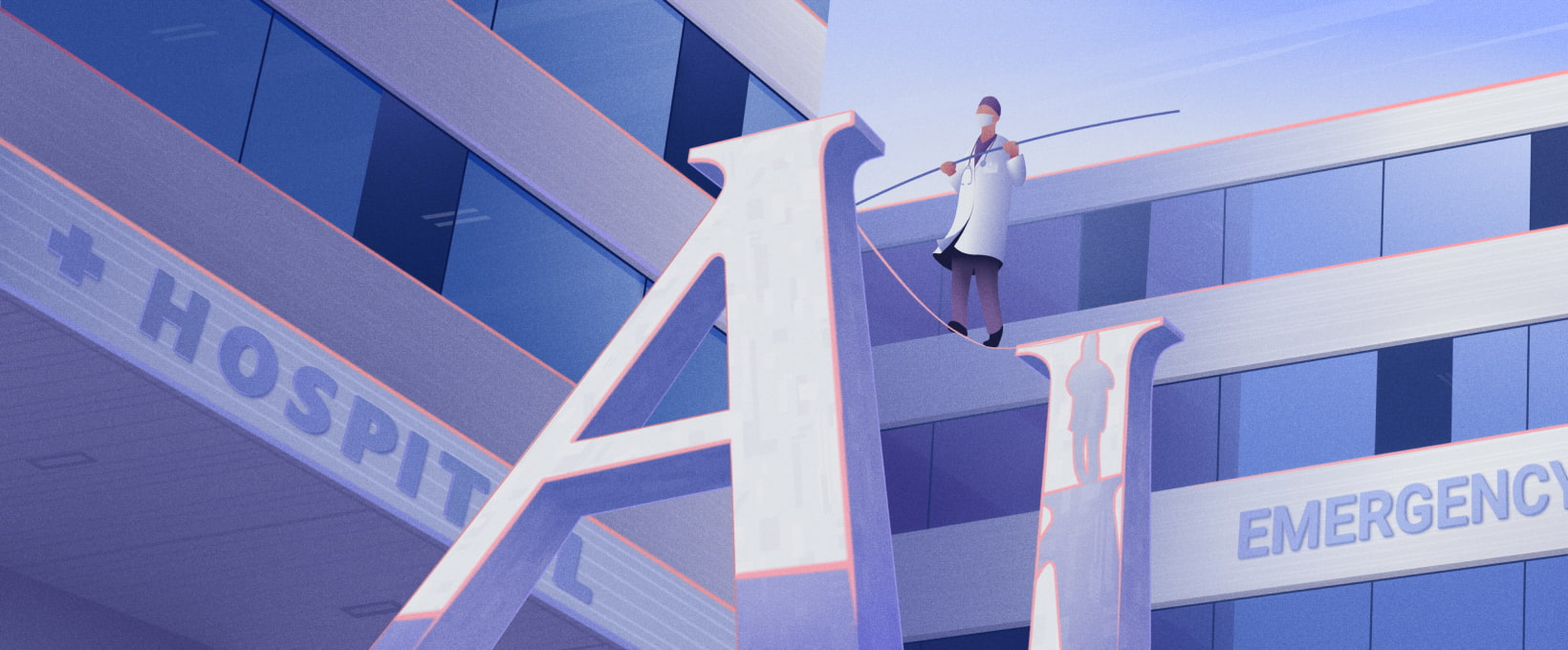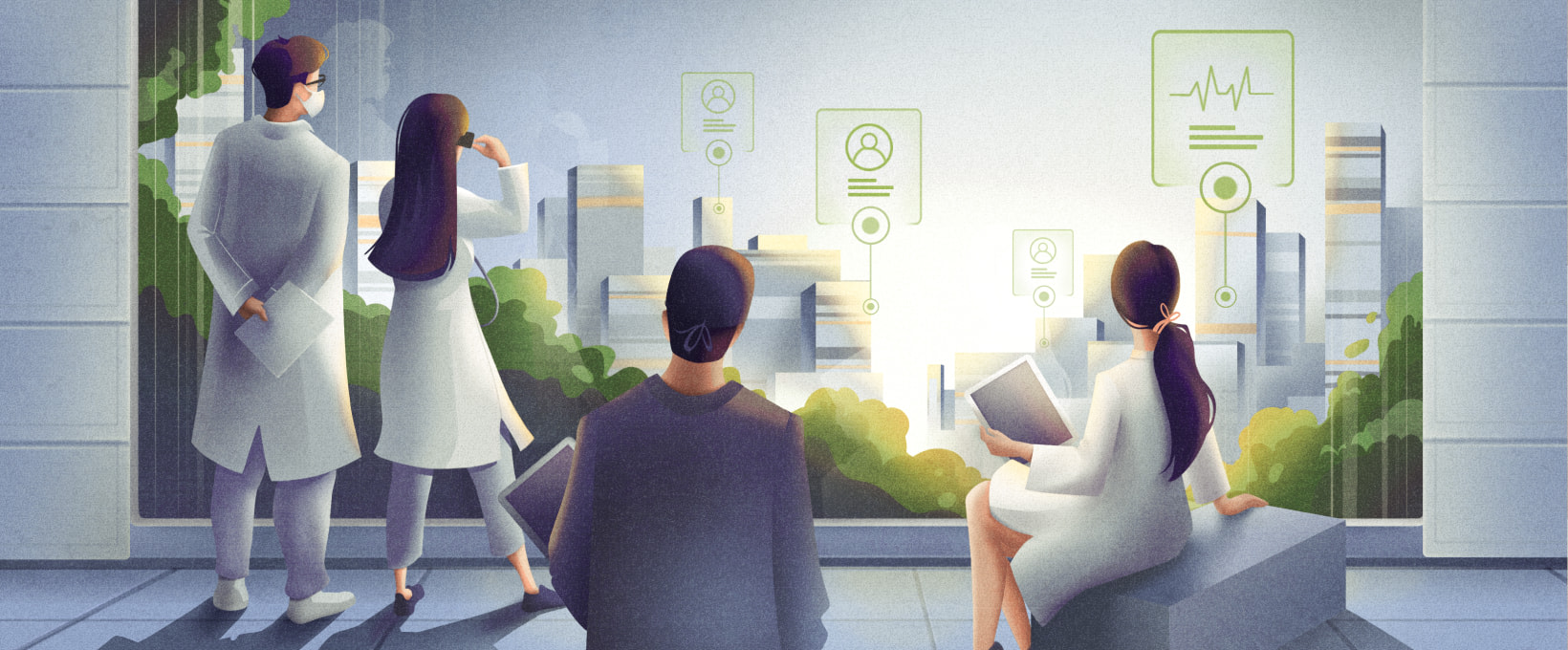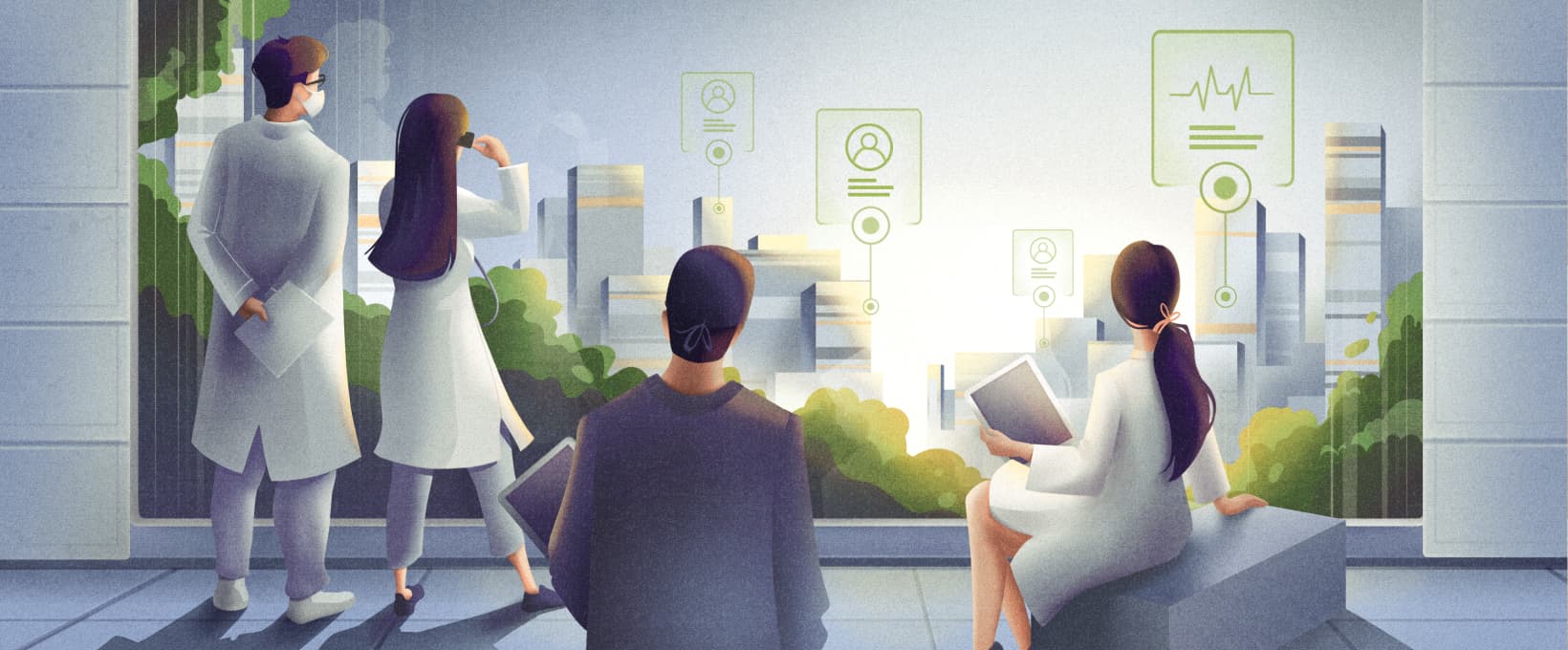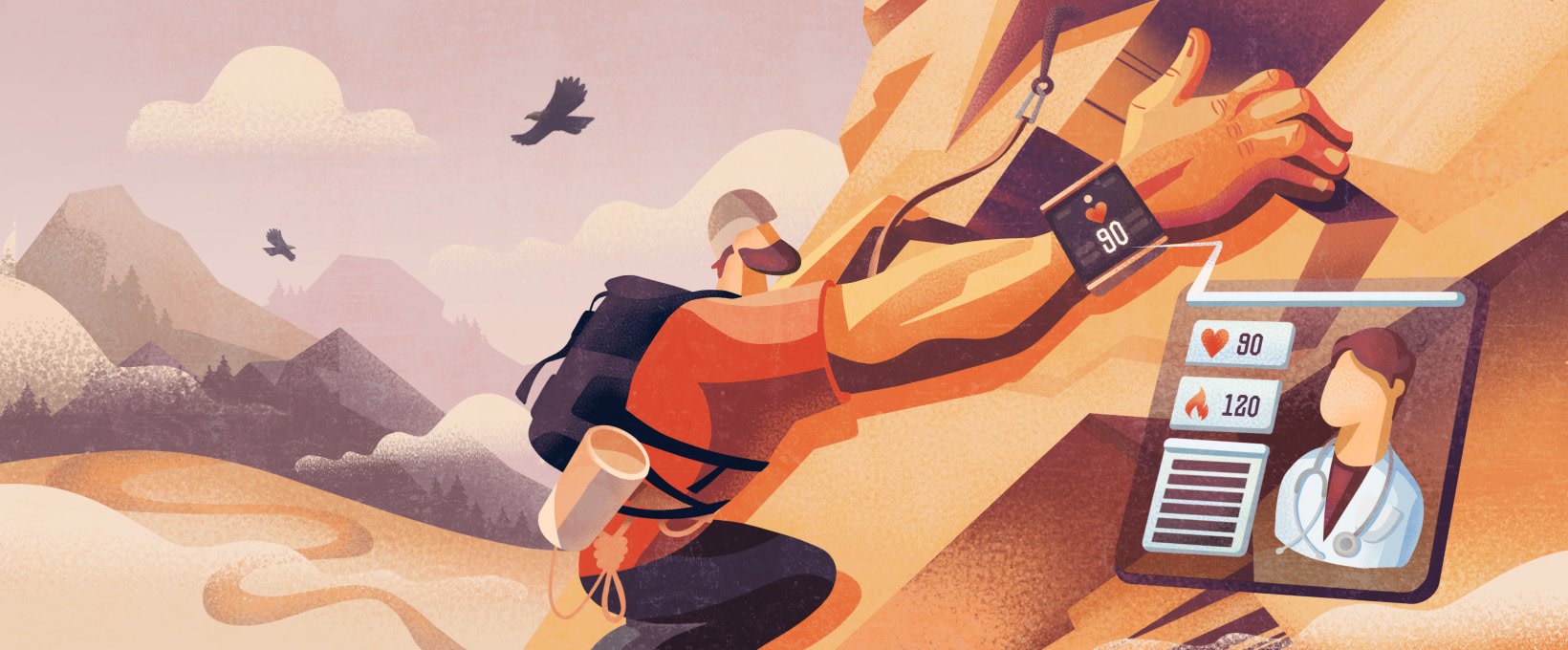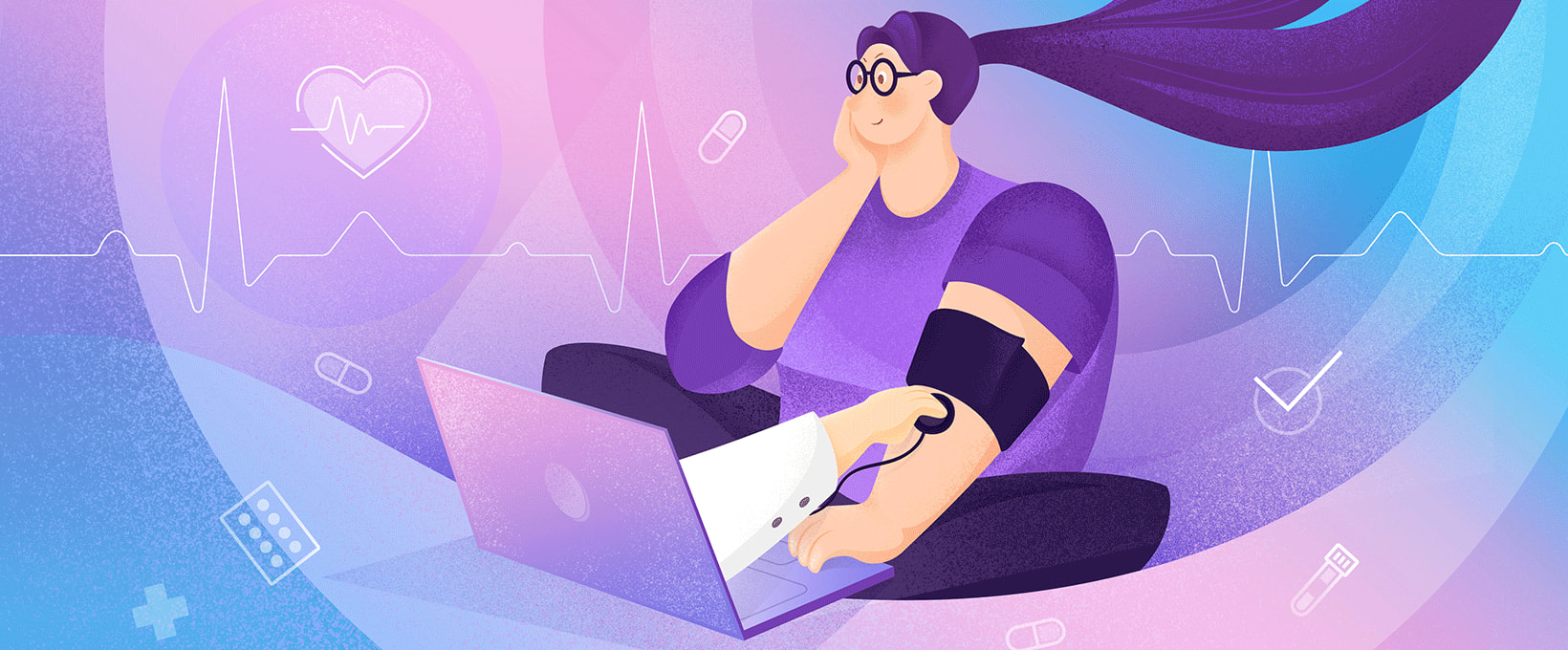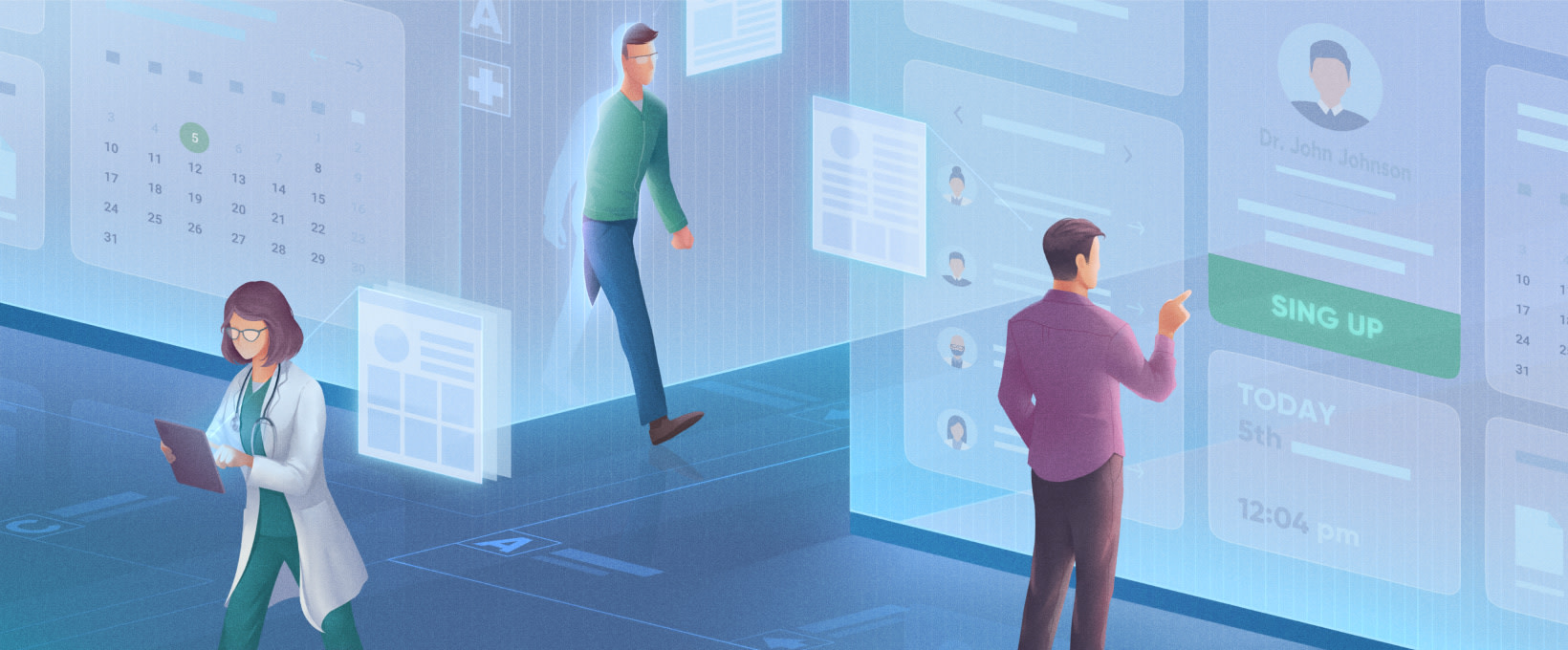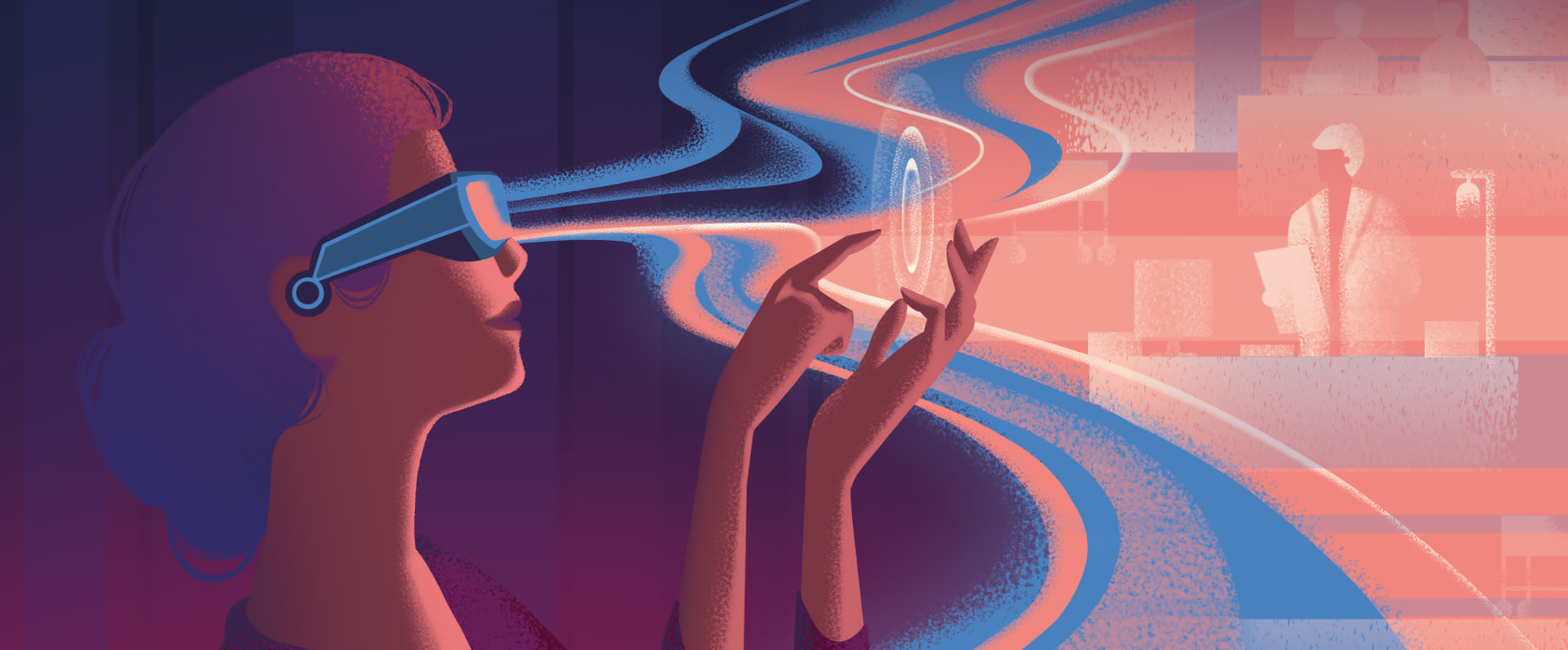- Patients’ Diagnostics and Monitoring
- Benefits for Healthcare Facilities
- A Breakthrough Experience: The Future of IoT in Healthcare
- Conclusion
The past year has brought new challenges in technology and healthcare, which humankind has never faced before. The world situation accelerated fast-paced medical device software development and made people realize the indispensable role of high-tech devices in their lives. Much more of the healthcare industry’s attention is focused on IoT solutions that keep up with the development of remote medical services. IoT is a network of physical objects that obtain information from their environments with the help of sensors and software, communicating it to other devices or systems over the Internet. For healthcare, this means medical device software integration that enables the transfer of patients’ data to a physician without personal intercommunication - but not only this. Below are a few IoT key perspectives the health industry benefits from already.
Patients’ Diagnostics and Monitoring
Healthcare IoT devices make precise diagnostics and the monitoring of ongoing vital signs available to those who need it the most: vulnerable patients with immunodeficiency due to oncology, seniors with mobility issues, as well as those who suffer from chronic diseases like diabetes, heart diseases, epilepsy, or even Legg-Calvé-Perthes disease. Wearables measure such vital signs as heart rate, respiratory rate, motion, and electrodermal activity, perform photoplethysmography or electromyography, and are able to send this data to physicians. All this contributes to the development of personalized medicine where patients get only the diagnostics and treatment they need.
For one of its business partners, which produces contact-free health monitors for whole-night heart-rate-variability, for recovery and readiness analysis, Andersen has developed an IoT solution relying on the principles of ballistocardiography. The remote patient monitoring software connects with ferroelectret sensors to receive a graphical representation of the repetitive movements of the human body that occur as a result of a sudden ejection of blood into large vessels with every heartbeat.
Throughout the night, the program monitors the heart rate, respiratory rate, and physical activity, as well as records and captures various conditions and then transfers data from sensors to the user-friendly medical application installed on a smartphone, tablet, or computer. Andersen’s engineers have developed this medical IoT solution for both iOS and Android platforms. Thanks to the built-in AI and a clear informative UI, any user, regardless of their level of medical training, can read the data in the form of convenient reports, conclusions, and recommendations. With this data, specialists can make well-educated choices for daily workouts, meetings, and other important events.
Among other solutions that we think are worth mentioning is an EarlySense sensor developed by a company operating in the US. The device is placed under the mattress and monitors the patient’s heart rate, respiration, and motion. In case any abnormality occurs, the sensor sends an alert to a caregiver’s device. Such constant contact-free monitoring promptly detects emergency cases, reduces the number of transfers to the ICU and code-blue events, prevents bed falls and hence accidental trauma. The EasySense solution is also used in some clinics to monitor the state of COVID-19 patients isolated in hospital rooms.
Another efficient IoT system is SeizeIT designed by the Belgium-American startup, Byteflies jointly with UCB. The system is aimed at measuring brain, heart, and muscle activity, as well as respiratory rate and motion. It consists of a patch discreetly attached to the patient’s body and a magnet placed on the patch. The solution is used for predicting seizures and enhancing the quality of life of patients with epilepsy.
The application of IoT in telemedicine is a separate subject. In the past months, the medical industry has realized that there is a demand for telehealth that provides disabled and isolated patients with the opportunity to be remotely consulted and diagnosed by their physicians. In telemedicine, IoT analysis kits are helpful, such as fast self-administered tests developed by one of the American companies - Cue Health. These tests allow patients to self-detect influenza, inflammation, the level of vitamin D, testosterone, and LH, as well as report these results to their doctors. Yet another solution that IoT offers telemedicine is a digital pill system designed by Proteus Digital Health to improve medication adherence. A pill with embedded sensors is swallowed by an individual and sends data to the mobile app of a physician, helping them track and adjust the medication-taking process.
Whatever the system is, you will need an experienced medical software engineering team to build a reliable IoT solution with sufficient software architecture and straightforward design to determine and eliminate the risks arising from using a medical device. This is where Andersen with its 14 years of experience can help.
Benefits for Healthcare Facilities
With the help of medical device software, IoT systems don't simply collect patients’ vitals. They can monitor the condition of medical equipment, temperature readings in hospital rooms, access to laboratories, medicine availability, and the time of the caregiver’s response to alerts. Systems like EarlySense, among other functions, send regular reports on the patients’ vital signs, bed exits, and the nurses’ response time to the facility administration. This not only reduces patient risk but also increases operational efficiency and quality of care, upholds the good name of the medical institution, and contributes to better control over health services. Thanks to IoT technology, patients’ morbidity and mortality rates, as well as the length of their overall stay in the hospital are reduced. Solutions for real-time medical equipment diagnostics and analytics provide a means to get the relevant information about the performance of equipment, fix the technical breakdowns, and avoid larger repairs or system failures. This results in significant savings for medical institutions and leads to the return of investment in IoT self-sufficient solutions.
A Breakthrough Experience: The Future of IoT in Healthcare
With the development of 5G network infrastructure, IoT technology offers humankind an experience that was never available before. With its ultra-low latency and vast bandwidth, 5G connection not only allows lightning-fast heavy data exchange like MRI images but also opens up the potential for ground-breaking treatment such as remote robotic surgery. In 2017, Ericsson, one of the leading ICT companies from Sweden, demonstrated its Haptic Glove at the Mobile World Congress in Barcelona. Thanks to sensors placed on the robot and the virtual reality headset, this "magic hand" enables the surgeon to perform real-time surgeries while being miles away. This technology promises access to high-quality treatment to a greater amount of people from all over the globe.
Conclusion
IoT in Healthcare, despite all its challenges like medical IoT security, HIPAA compliance, or machine failure, is already at the door. It’s becoming a medical world reality and affects our lives already, altering the understanding of what cutting-edge diagnostics, treatment, and healthcare look like today. Andersen has years of proven experience in developing medical software and IoT solutions for experts, health clinics, and other types of customers worldwide. Сontact us for a free consultation to learn more about the benefits of Digital Transformation for your healthcare business.
